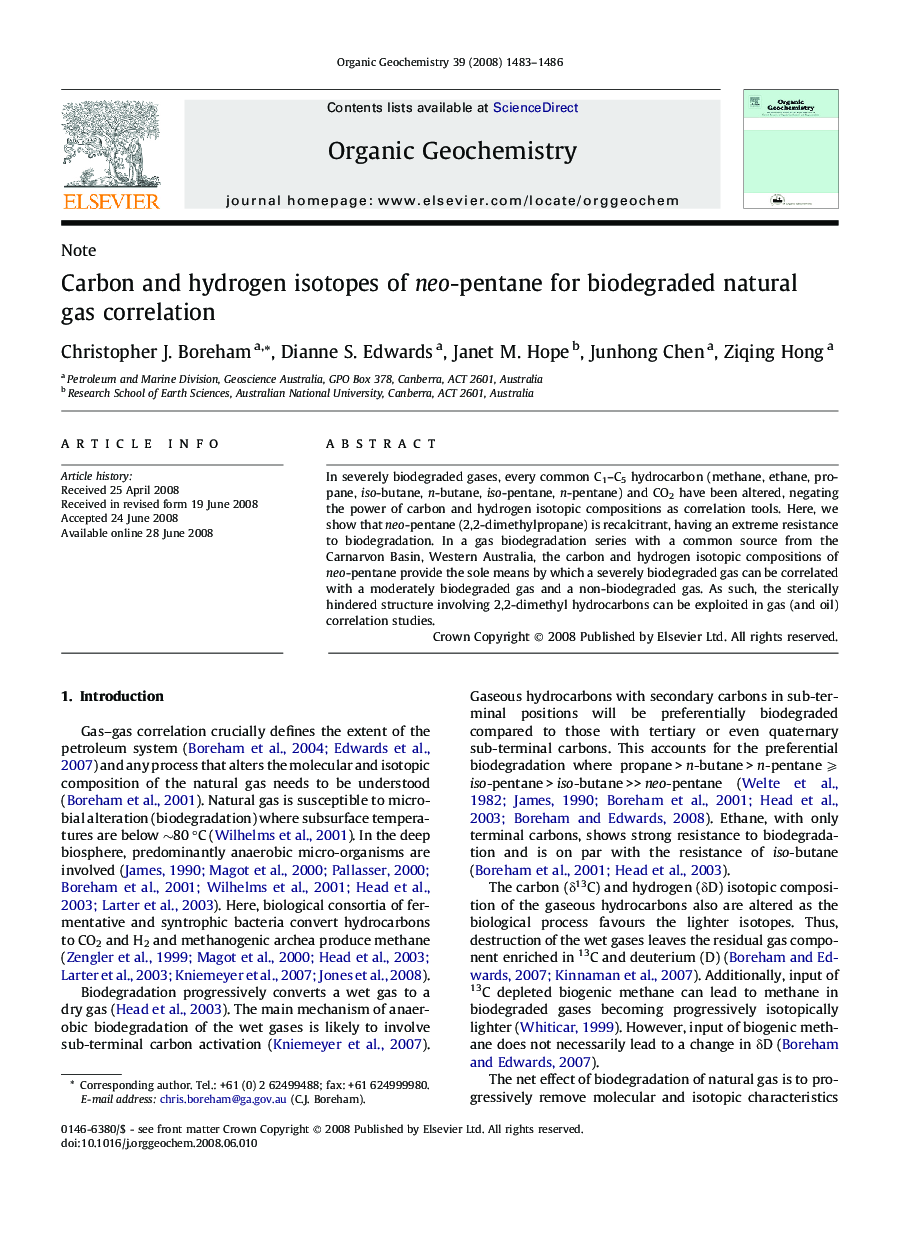| Article ID | Journal | Published Year | Pages | File Type |
|---|---|---|---|---|
| 5163503 | Organic Geochemistry | 2008 | 4 Pages |
Abstract
In severely biodegraded gases, every common C1-C5 hydrocarbon (methane, ethane, propane, iso-butane, n-butane, iso-pentane, n-pentane) and CO2 have been altered, negating the power of carbon and hydrogen isotopic compositions as correlation tools. Here, we show that neo-pentane (2,2-dimethylpropane) is recalcitrant, having an extreme resistance to biodegradation. In a gas biodegradation series with a common source from the Carnarvon Basin, Western Australia, the carbon and hydrogen isotopic compositions of neo-pentane provide the sole means by which a severely biodegraded gas can be correlated with a moderately biodegraded gas and a non-biodegraded gas. As such, the sterically hindered structure involving 2,2-dimethyl hydrocarbons can be exploited in gas (and oil) correlation studies.
Related Topics
Physical Sciences and Engineering
Chemistry
Organic Chemistry
Authors
Christopher J. Boreham, Dianne S. Edwards, Janet M. Hope, Junhong Chen, Ziqing Hong,
